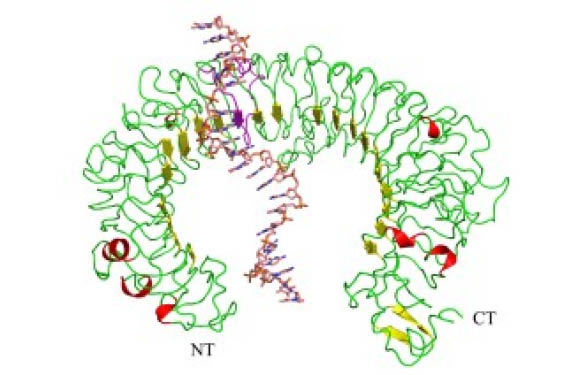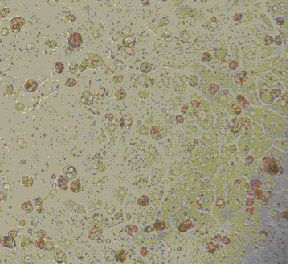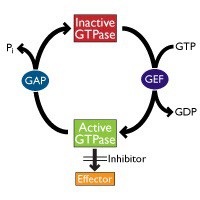As part of the innate immune response, Toll-like receptor 9 recognizes unmethylated CpG nucleotide sequences, which are very common in viruses and prokaryotes and more rare in vetebrates. Scientists routinely use synthetic oligonucleotides as TLR9 agonists for a variety of applications requiring activation of an innate immune response via TLR9. These relatively simple oligonucleotides are easy to produce, and as a result some companies have extensive catalog offers.

These offers include the common CpG ODNs such as ODN2006 and ODN2216 offered in various scales (200ug to 5mg) and with a variety of modifications. For example, an ODN 2006-FITC molecule contains a fluorophore at the 3′ end of the nucleotide, and an ODN 2216-biotin carries a biotin moiety. Here we’ll explore 3 reasons why you should order custom produced TLR9 Agonists rather than these catalog offered ones.
Reason #1: Custom ODNs are less expensive
One would expect oligonucleotides produced in bulk and sold in aliquots to many users to be less expensive, but this is simply not true. A survey of catalog prices for CpG ODNs reveals that prices are double or triple those of custom produced high quality oligos.
According to oligonucleotide specialist Dimitri Szymczak , researchers can get 5mg of ODN2006 from tebu-bio (produced by the highest quality manufacturer, TriLink Biotechnologies), for less than half the price most companies are selling this for in their catalogs.
Reason #2: Custom ODNs are new
 Some things like wine get better with age. This is not true for oligonucleotides. Vendors of catalog TLR9 ligands generally recommend they be stored at -20C for 6 months to one year by the user. One wonders how long the companies offering these as off-the-shelf catalog products have stored them prior to shipping. Rather than dusting off a bottle of old ODN 2006 from someone else’s freezer, ordering a freshly produced batch is recommended.
Some things like wine get better with age. This is not true for oligonucleotides. Vendors of catalog TLR9 ligands generally recommend they be stored at -20C for 6 months to one year by the user. One wonders how long the companies offering these as off-the-shelf catalog products have stored them prior to shipping. Rather than dusting off a bottle of old ODN 2006 from someone else’s freezer, ordering a freshly produced batch is recommended.
Hundreds of researchers have already published with high quality custom ODNs from TriLink Biotechnologies. The following are just a few of the many studies that have used TriLink Biotechnology’s CpG ODNs for TLR9 activation:
J Immunol. 2004 Oct 15;173(8):5283-9. ODN 2006 and ODN 2216 J Immunol. Nov 15, 2009; 183(10): 6262–6268. ODN 1826-Biotin Clin Exp Allergy. Jan 2010; 40(1): 94–102. ODN 2216 Biomaterials. Feb 2011; 32(6): 1731–1737. ODN 1826 and ODN 2216 Braz J Med Biol Res. 2010 Oct;43(10):964-8. ODN 2216 Virology. 2010 Aug 1;403(2):155-62. ODN 2006 and ODN 2216Reason #3: Custom ODNs are… customizable!
When requesting custom TLR9 ligands, one can request any modification, tag, sequence and scale of production. Although it is true that custom oligonucleotides can be somewhat expensive when small quantities are ordered, users of CpG ODN generally order milligrams at a time. These 1mg and 5mg orders put requests into the bulk order category of pricing, even if they are only paying a few hundred euros. With this in mind users can then request any custom modification and scale they wish and are not limited by what is in a catalog.
In addition to TLR9 Agonists, TLR9 Antagonists and ODN Controls are available as custom oligonucleotides.
Class A ODNs: (G denotes a nuclease resistant phosphorothioate base)
5’-GGGGGACGATCGTCGGGGGG-3’
5’-GGGGACGACGTCGTGGGGGGG-3′
5’-GGGGTCAACGTTGAGGGGGG-3′
Class B ODNs (*Note: all bases are phosphorothioate)
5’-TCGTCGTTTTGTCGTTTTGTCGTT-3’
5’-TCCATGACGTTCCTGATGCT-3’
5’-TCCATGACGTTCCTGACGTT-3’
5’-TCGTCGTTGTCGTTTTGTCGTT-3’
Class C ODNs (*Note: all bases are phosphorothioate)
5’-TCGTCGTTTTCGGCGCGCGCCG-3’
5’-TCGTCGTCGTTCGAACGACGTTGAT-3’
Interested in seeing for yourself how using custom produced TLR9 agonists can save you money? You can find out more online here, or leave a comment below.



